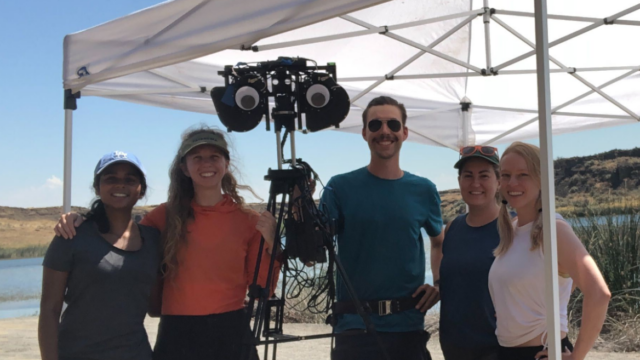
2022-09-03
Adventures with MASI: The Mastcam-Z Analog Spectral Imager
by Megan Barrington, Alivia Eng, Max Gabbert, Bavani Kathir, and Melissa Rice
A mesmerizing view of the North Cascades surrounds us, the Sun is shining, and a fresh Pacific Northwest breeze swoops in from time to time. Certainly, few offices can contend with this one. A group of us from the Mastcam-Z student team at Western Washington University (WWU), and group leader and Mastcam-Z Student Collaborator Megan Barrington from Cornell University, assess a weathered andesite outcrop at the first of three Mars analog sites we aim to visit over the next few weeks of August. We will image this site using the Mastcam-Z Analog Spectral Imager (MASI), which is a stereoscopic, multispectral camera built to emulate Mastcam-Z as closely as possible. While composed primarily from off-the-shelf components, MASI uses the same Charge-Coupled Device (CCD) sensors as well as a set of flight-like engineering model color filters from Mastcam-Z, enabling MASI to capture images and data which are very similar to those collected on Mars. Each site we will visit provides a unique igneous chemistry and a variety of weathering patterns. So, by using MASI to acquire images of igneous weathered surfaces, we can better interpret the weathering patterns we observe on Mars and gain a greater understanding of Mastcam-Z’s capabilities. As Megan types in commands on her field laptop, the rest of the team watches MASI’s lenses adjust to their commanded position and proceed to take images through the same filters that are on Mastcam-Z aboard the Perseverance rover.
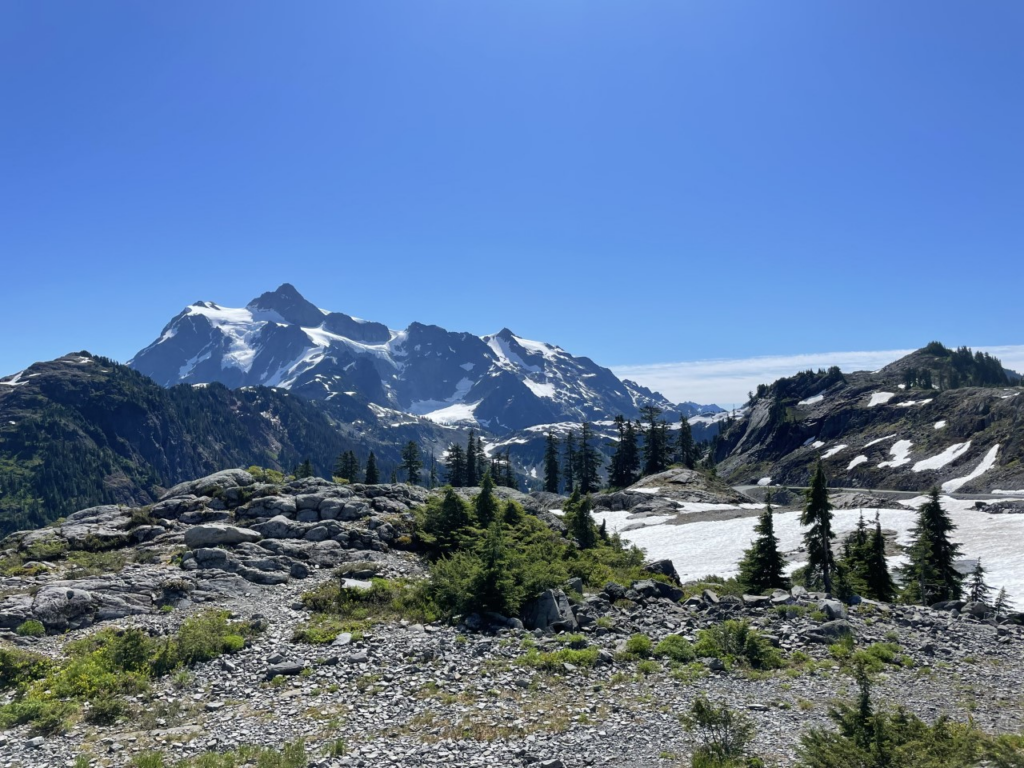
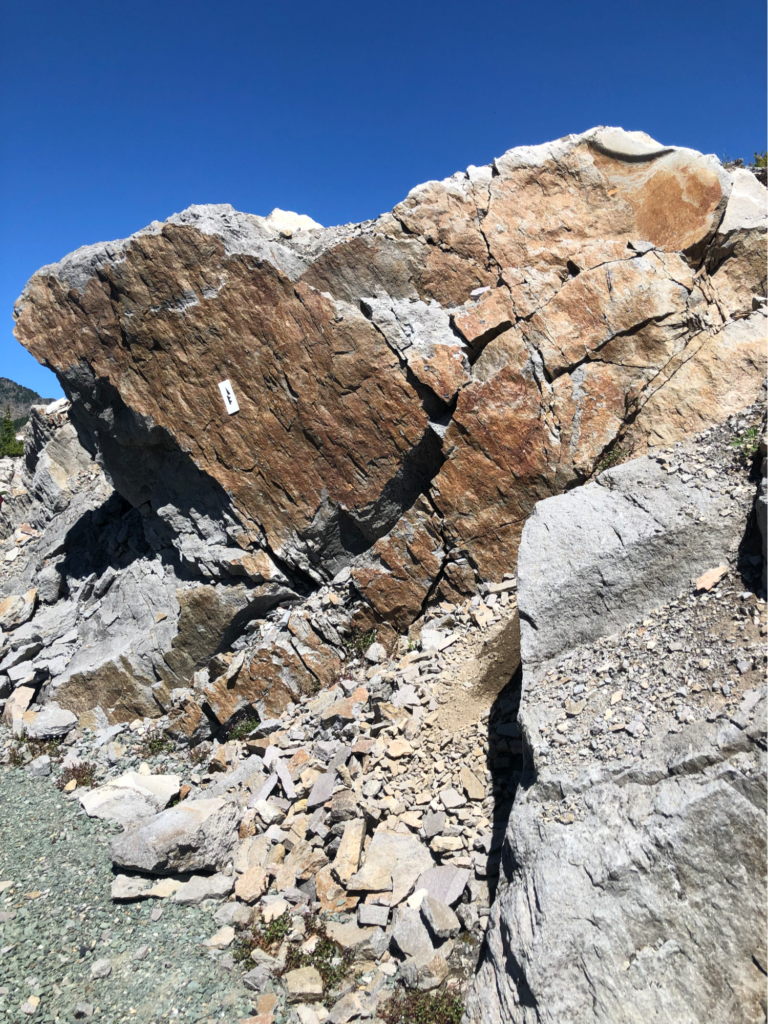
Of the three sites we intended on bringing MASI to, the andesitic outcrop represents a more felsic (silica-rich) endmember with an intermediate composition and a bright fresh surface. While it was beautiful outside, we couldn’t spend all day collecting data. The position of the Sun in the sky limited our multispectral data collection to as close to local noon as possible. When the angle between the Sun and the instrument (known as the phase angle) becomes very small or very large, our data is affected. Thus, we were racing against the clock! Immediately after taking field notes, we began to assemble MASI. With MASI’s valuable set of eyes, and even more valuable set of filters and a nest of cables, it took at least two people to get it upright. First, we set up the tripod and made sure it is level, which can be tricky on a talus (landslide debris) slope. Next, in a swift movement, one person lifted MASI’s cameras out of the heavily cushioned case, while the other held the cables and mounted it onto the tripod.
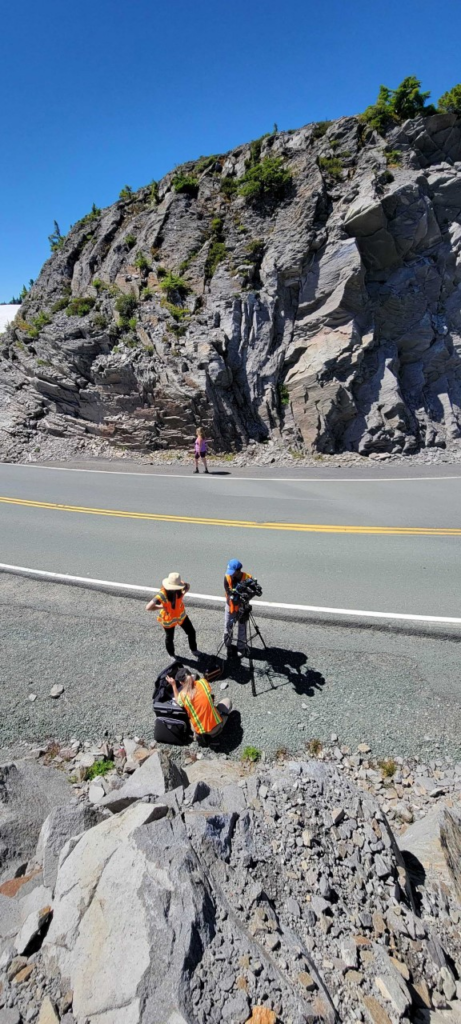
Once MASI was all plugged in and powered on, the fans began to keep it cool while Megan checked to make sure MASI was connected to the field laptop. At first, MASI was misbehaving. It seemed with every new attempt to get a multispectral observation, there was a new problem. For one, MASI is a bit top heavy, which frequently causes its “eyes” to drop back abruptly and dramatically giving up if we command it to look above the horizontal – this movement is grimly nicknamed “dead baby.” Second, one of MASI’s eyes was not connecting to the laptop. While Megan troubleshot, we helplessly watched as the Sun moved and our portable batteries drained. Due to MASI’s continued stubbornness, we decided to call it a day so that Megan could phone home for additional problem solving. Right before we unmounted MASI from the tripod, we noticed that we needed to return the lens to its original position so that MASI could be stored safely. Megan turned the laptop back on and her face lit up, MASI was all connected and ready to take a multispectral observation! I guess it wanted us to work for it.
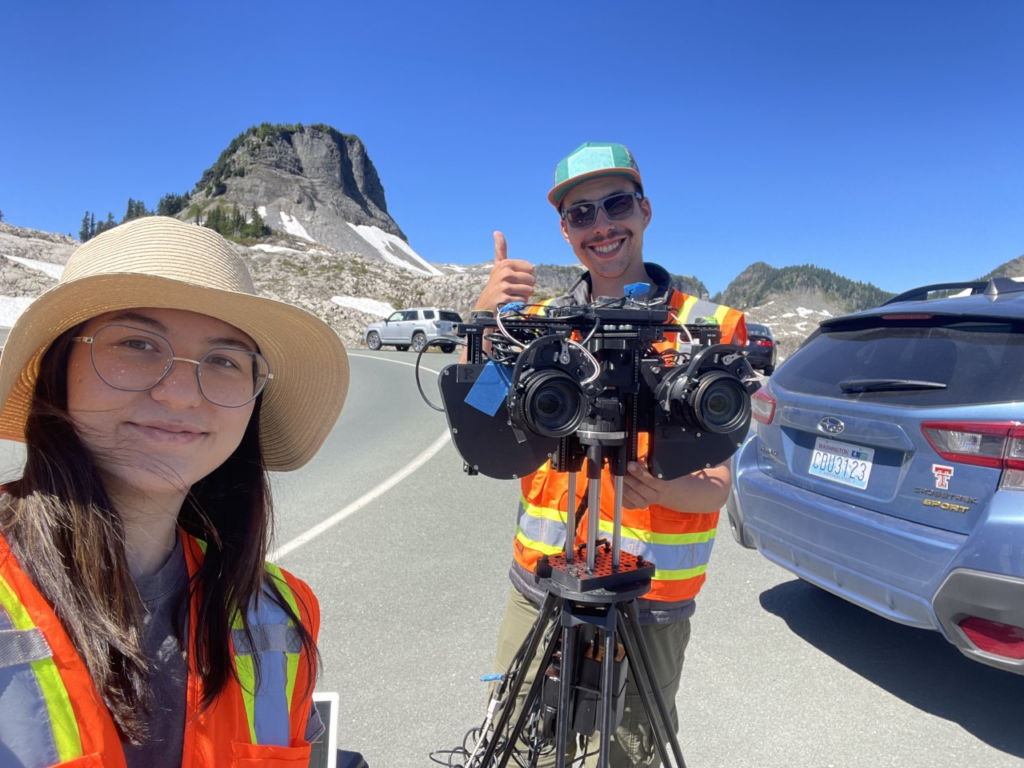
We had some time and juice left in our batteries, but then a cloud blocked our precious light source. Luckily, the breeze had picked up and we only waited about five minutes for the cloud to pass. Since we knew by now that MASI can have a mind of its own, I physically held part of it in place on the tripod to prevent “dead baby” during our last multispectral acquisition opportunity. Megan called out the filter names as they were acquired, “L2…R2…L3…R3…” and I crossed my fingers that the battery held on long enough to get through the last filter.
“R6!”
Success! Had everything gone smoothly with an obedient MASI, setup through data collection would’ve taken around 30 minutes. But we took about 2 hours to get our multispectral observation and so verged on the end of our ideal Sun position. We hoped to get a stereo image that day too, but both portable batteries had died devoting their lives to the multispectral acquisition. Thankfully, MASI seemed to blow all its steam on the first day and we spent much less time fighting with a robot at our next two sites. The next day, we ventured out to the Sven Larsen Dunite Quarry located at the base of Twin Sisters Mountain. The Twin Sisters dunite mass is one of the largest olivine deposits in the United States. Dunite is an ultramafic igneous rock that is composed of more than 90% olivine. As weathered ultramafic (high iron and magnesium, low silicon) rock spectra have been observed in the South Séítah region within Jezero Crater on Mars, studying similar rocks on Earth with MASI can help scientists ground truth data and provide crucial information on Mars’ geologic history.

Upon arrival, we were excitedly greeted by the quarry’s owner, Corky Smith. After a brief safety session, we all proceeded to drive up a long, bumpy dirt road to our field site for the day. After scoping out the area and deciding on a weathered rock surface as a MASI target, we set up the equipment and slathered on loads of sunscreen to prepare ourselves for the hot day ahead of us under the blazing Sun. We followed similar procedures as those that we had earlier used on Mount Baker. On this day we recorded field site observations, collected a multispectral sequence of the target, collected another multispectral sequence with the calibration target in the rover bed frame of reference, captured spectra from Regions of Interest (ROIs) on the target with an ASD handheld field spectrometer, collected hand samples, collected more multispectral observations post-sample, and lastly, captured a short baseline stereo to use in an eventual 3D model of the landscape. Capturing a stereo image involves collecting L0 and R0 (broadband RGB color filters) image pairs at three to five locations, about one to two meters apart. This involves multiple people to accomplish; one to hold MASI’s head in place, another to hold the tripod, and others to carry all the equipment simultaneously while shuffling to the next location.
On the whole, the day progressed smoothly as we collected various data. However, due to the sweltering heat and lack of shade in the quarry, MASI and the laptop began to overheat. This started causing lags in the data collection process as the equipment started to act up. As a temporary solution, we found an umbrella to provide shade for the laptop and we each took shifts on “umbrella duty.” We continued with the multispectral data collection despite the few hiccups, and even got a chance to whip out the rock hammer and collect some hand samples. We went home happy at the end of the day, with new data to explore, our hands full of rocks, and prepared to head out to our next field site.
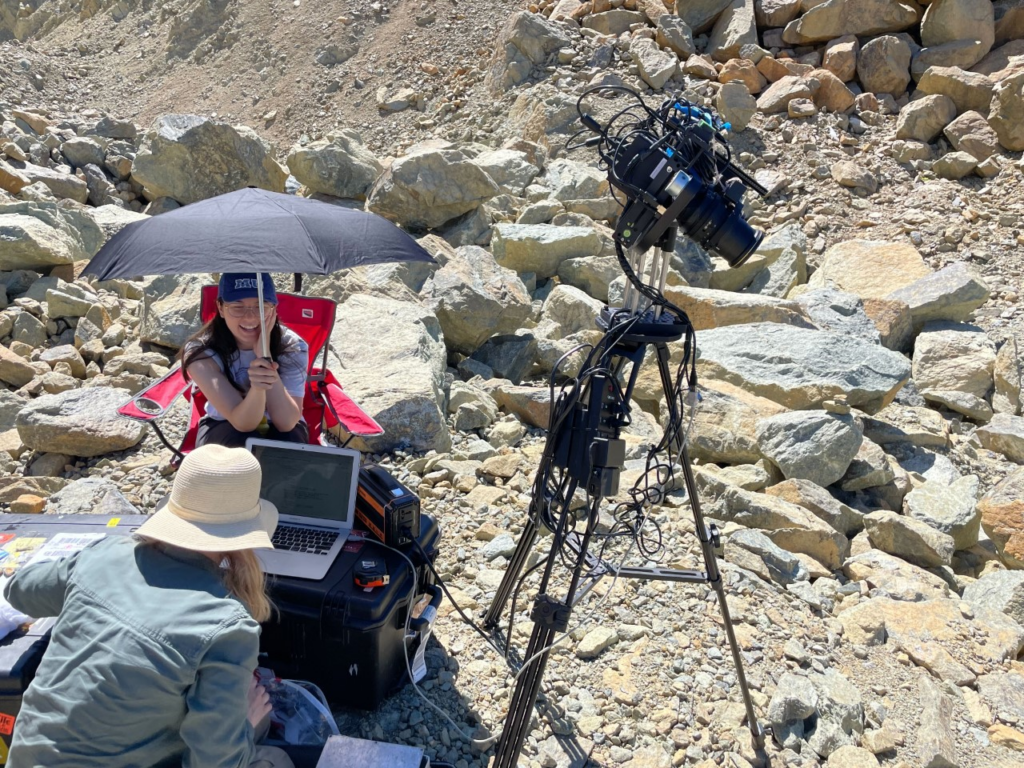
We packed up all the gear and equipment, gathered some food, and drove out to the other side of the Cascade Range into the Channeled Scablands of Eastern Washington. Here, the Columbia River Flood Basalts were carved and shaped by multiple watery outburst floods from Glacial Lake Missoula. Compared to our previous sites, these basaltic igneous rocks contain lower silica content than andesites and lower olivine content than dunites.
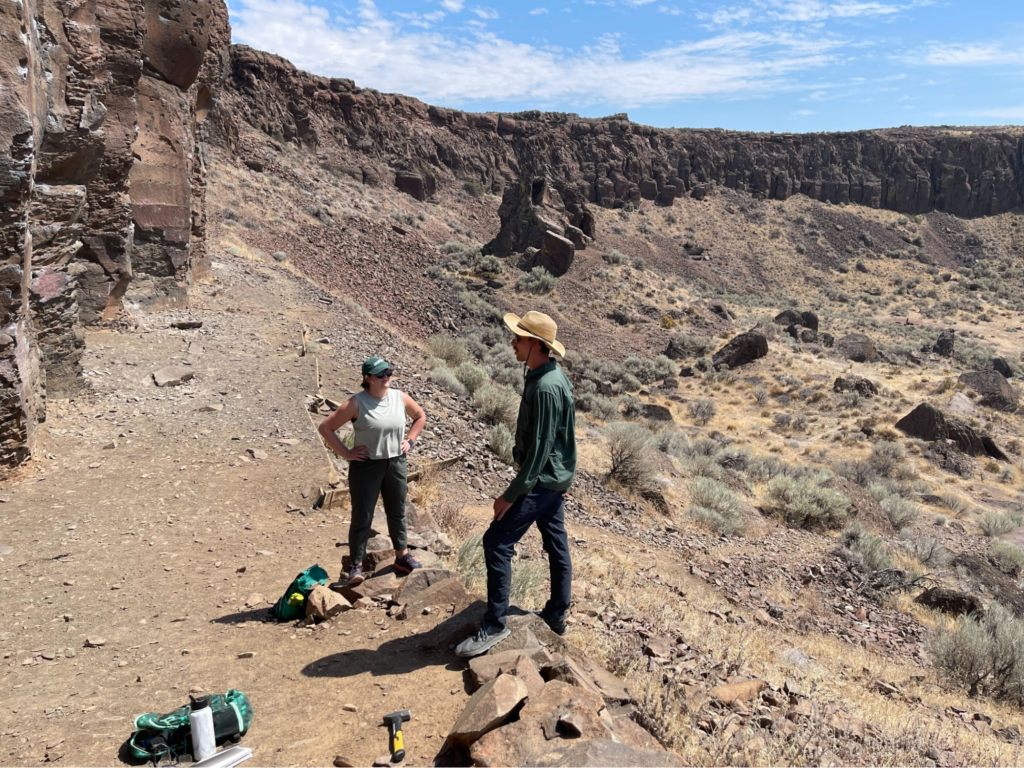
Our plan was to image a couple of sites along the Columbia River. The morning after our arrival, however, the sky was overcast. A low-pressure system had parked right above us and was forecast to keep the clouds above us all day. To get observations with MASI, we need direct sunlight. An overcast day meant that MASI had an unexpected day off. We used this opportunity to scout out some potential locations for when the Sun returned.
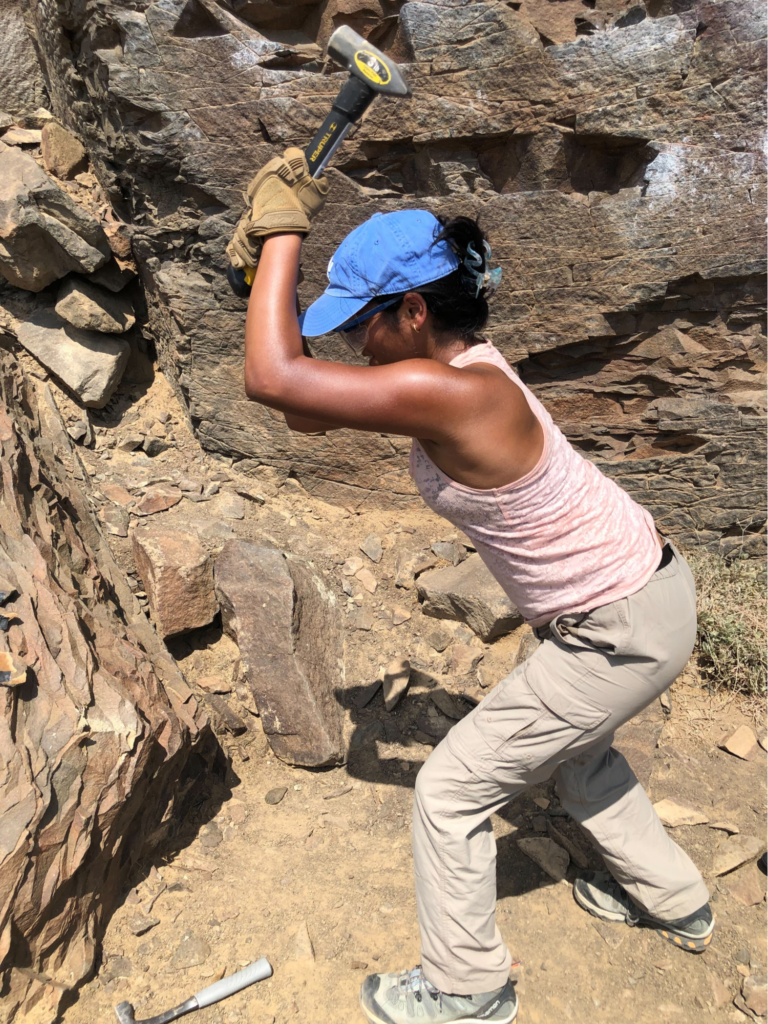
First, we visited Frenchman Coulee, passing by huge columns of red-brown weathered basalt. Rock climbers took advantage of the exposed columns and there were several scattered around the site. On foot, we passed through a wall of columns in a natural gap that concentrated the wind into strong gusts, and on the far side we found an outcrop that met our criteria. However, the path to the wall was too steep and sandy to safely bring MASI and all its equipment to where we wanted to image. We decided to move on to Potholes Coulee in the Ancient Lakes area, which was about a half hour drive away. Here, the basalt doesn’t outcrop in prominent columns like in Frenchman, but rather in smaller walls with dark pillows surrounded by crumbling nontronite (an oxidized iron-bearing clay mineral) and loose sediments. We found a good site next to a lake along the rough gravel road that we drove in on. Unlike Frenchman Coulee, we could set up MASI right next to the cars at this site. By the time we hit our observation window, clouds still stretched across the sky. To increase efficiency the next day, we spent some time at both sites collecting spectra with the handheld ASD field spectrometer and gathered hand samples.
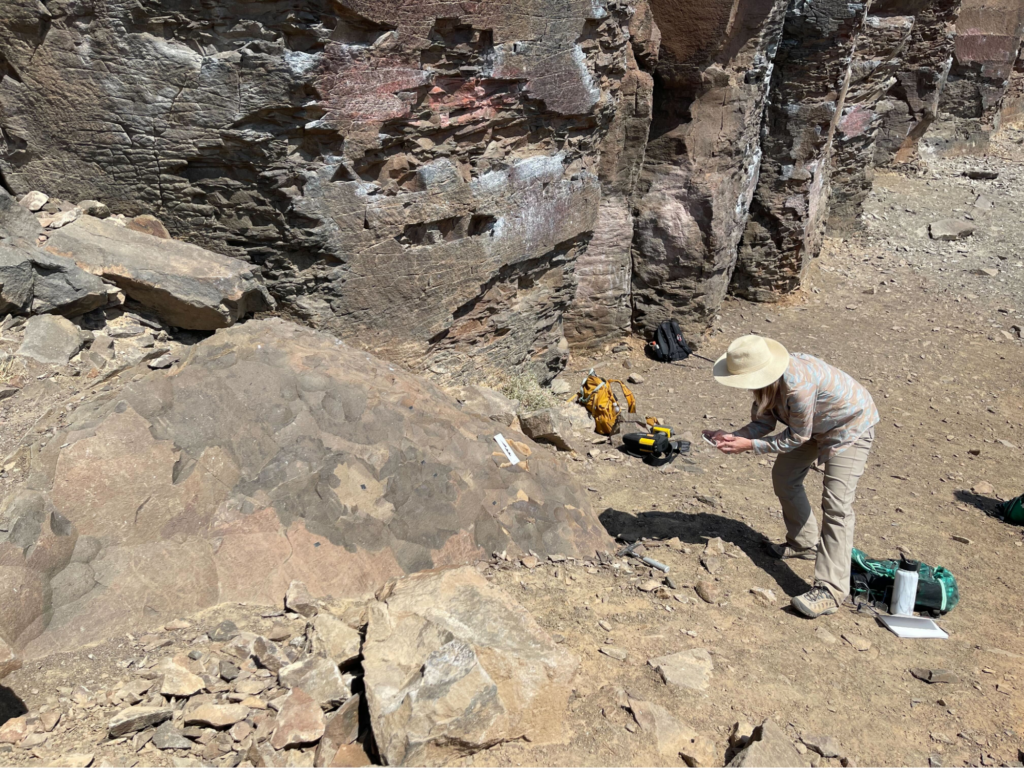
While it was overcast, it was still hot. The humidity was high and as the day went on, it only felt hotter. However, the next day did not have the previous day’s cloud cover to tame the heat. As we returned to the site at Potholes Coulee for imaging, we noticed immediately that the direct sunlight would be an issue for MASI and its equipment. Luckily, this time we had a pop-up canopy for shade, which proved to be incredibly helpful. As our observation window opened and we began the data collection process with MASI, the National Weather Service reported a heat index of 121°F. MASI was having some difficulties keeping station with the servos and the left eye was failing to respond again, resembling similar issues we had seen before in previous sites when it got too hot. Even so, we persisted and collected data through the observation window. By the time we packed up for the day, the National Weather Service was reporting a heat index of 134°F. That evening was spent sorting samples and troubleshooting MASI in the comfort of air conditioning.
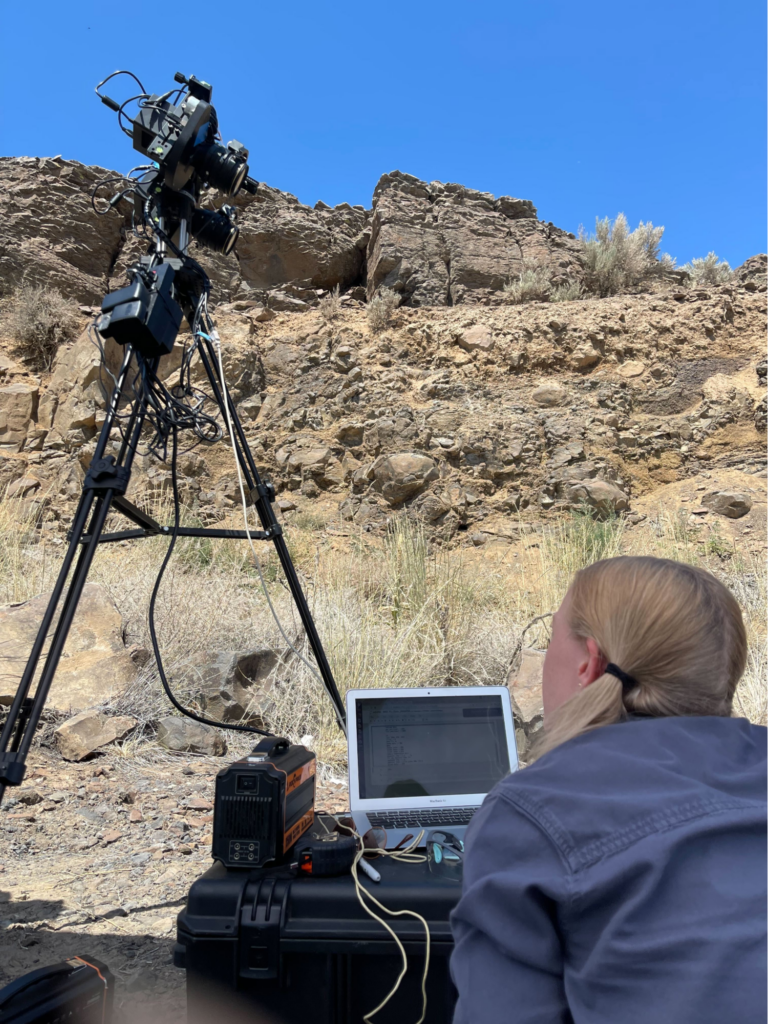
With one final day to collect data, we returned to our site at Potholes Coulee to wrap up our observations. Collecting one last multispectral imaging set, we soon moved on to the stereo images. With every new position we imaged from, we moved the entire setup – including the canopy – to make sure the entire apparatus remained in the shade as much as possible. The left eye was working better, but the servos required someone to hold MASI’s eyes in place for most of the time. After we completed the stereo images, we then moved the calibration target on to a cooler near the camera to replicate the geometry of a rover deck shot. Then, concurrently the left eye started malfunctioning again while the servos began working. So, we could move MASI to the right spot but couldn’t get a good image. Eventually, after some frustration and various attempts to troubleshoot the current problem, we called it a day, packed up, and headed back to Bellingham.
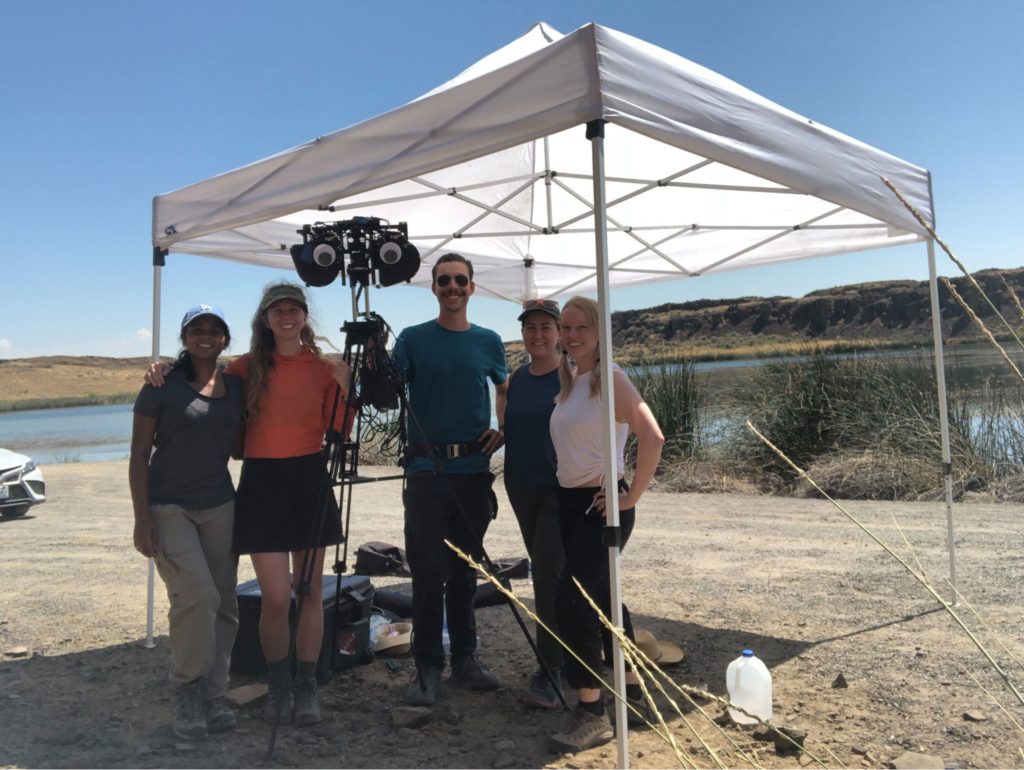
No matter how much we prepare, field work can throw a wrench into our best laid plans. Sometimes you break your own code, sometimes field gear malfunctions, and sometimes everything is working fine, but nature has alternative plans. Luckily, by knowing this ahead of time, we used redundancies in our field procedures to our advantage, and collected multispectral and stereo data from each site which can be used to characterize the various mineralogies and weathering patterns we came across in Washington state. More importantly, though, the lynchpin of our operation was the group of cooperative, collaborative, and flexible people who employed all of their skills to assist in any way they could. We met the goals we set out in our field campaign, and through our mutual commiseration, field sandwiches, and lots of talking and music on the road, we made friends along the way.
[Note: For more technical details of the MASI system, see this abstract from the 2020 Lunar and Planetary Science Conference by Megan Barrington and colleagues: Barrington, M.N., C.D. Tate, A.G. Hayes, J.F. Bell III, B.N. Horgan, and M.S. Rice, Mastcam-Z Analog Spectral Imager, 51st Lunar & Planetary Science Conf., Abstract #1595, 2020.]